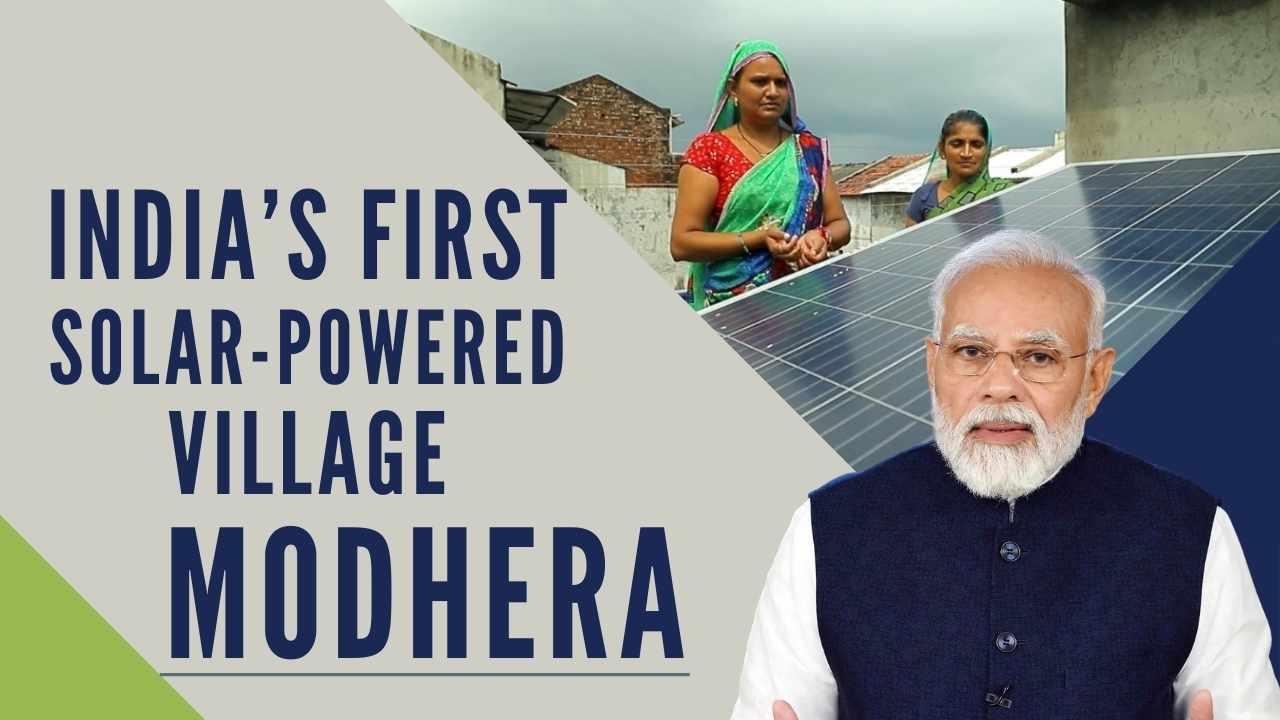
Solar Powered Village – Modhera
Modhera is located 35 km away from Mehsana district of Gujarat. It is famous for its Sun temple It hosts a solar-powered 3D projection facility installed at its premises to give visitors information about the village’s history. The temple has also the Heritage Lighting, making it the first heritage site in India to run only on solar power. The village has over 1,300 rooftop solar panels on residential and government buildings that are connected to a power plant.
“There are three major components to this entire project. One is a mounted 6-megawatt project. The second is the 15-megawatt battery storage system and the third is the one-kilowatt rooftops installed on 1,300 houses,” Rajendra Mistry, the chief project officer of Gujarat Power Corporation Limited, said. Modhera has 1,600-1,700 electrified houses, and nearly 1,400 solar power connections. With the rooftop solar panels at residential and government buildings alone produce over one kilowatt (kW) of electricity, which is much more than what they consume.

Prime Minister Narendra Modi declared Modhera, a village in Mehsana district of Gujarat, as India’s first solar-powered village. Modhera, is also associated with the Sun Temple. According to the Gujarat government, over 1000 solar panels have been installed on village houses, generating electricity for the villagers. They will be provided with solar electricity at zero cost.
Solar power Generation
The solar power village uses 1000 solar panels that have been installed on the village homes to generate electricity for the villagers around-the-clock, making it self-sufficient in solar energy generation. It is created using a ground-mounted solar power plant and more than 1300 rooftop solar systems on homes and government structures that are all connected to battery energy storage devices (BESS). The village will be powered throughout the day by solar panels, and in the evening, the BESS will power the homes. A BESS is a particular kind of energy storage device that stores and disperses energy in the form of electricity using batteries. The state provided 12 hectares of land for the project’s implementation, which was done in two phases. For this initiative, the national and state governments have each contributed about Rs. 80 crores.
Benefits
The initiative will show how India’s expertise in renewable energy can empower local residents. Instead of paying for electricity, the villagers might start to profit from the solar panel’s energy output by selling it to the public grid. In the long run, it will raise living standards by creating jobs at the village level. It will improve the long-term execution of numerous welfare programmes in the region. Residents would be able to save between 60 and 100 percent on their electricity costs. It will lessen the tedium experienced by rural women and girls who must travel great distances to gather fuel wood and cook in smoky kitchens. Additionally, it will reduce the likelihood of developing lung and eye conditions.

It will generate employment at the village level, and ultimately improve the standard of living. It will reduce the drudgery among rural women and girls engaged in the collection of fuel wood from long distances and cooking in smoky kitchens.
Read More: Types of Solar Panels That Exist in India: All You Need to Know

